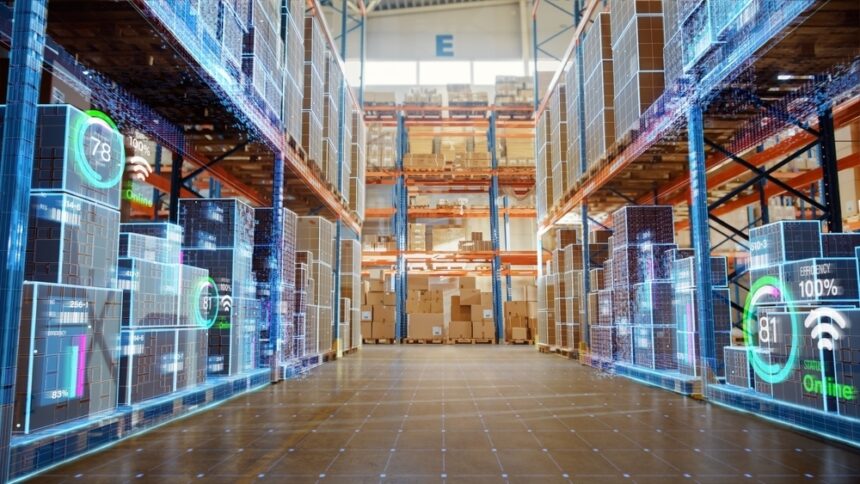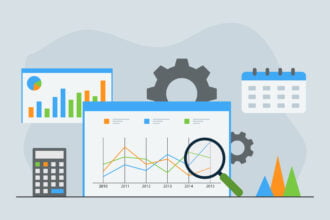Consumers today want retailers they do dealings with, to provide them with simplified and personalized services. If you fail to meet their standards for an effective and focused product offering, most of them will quickly take their money elsewhere.
One of the secrets to attracting and retaining customers is to become more data-centric.
The retail industry is expanding all the time.
Did you know that retail sales in the US are expected to reach $5.94 trillion in 2024, up from roughly $5.47 trillion in 2019?
According to many surveys, more than 90% of retail organizations across a wide range of sectors feel location data is crucial to their success.
In fact, the popularity of location data has grown so much that it is expected to touch about $35 billion in value by 2027.
In this article, we will talk about nine ways location data can help you excel in retail.
9 Ways Location Data Can Help You Excel in Retail
Retailers can utilize data analysis to uncover trends in consumer behavior in order to make wiser decisions about product development, price, customer engagement, and so on.
From the most basic to the most complicated concerns, data may assist guide your decision-making strategy.
You may go beyond mere purchase behavior by incorporating social media activity into marketing techniques specific to your key demographics.
As the current business world has changed rapidly owing to technology and other advancements, the most agile merchants have thrived and even prospered, typically by employing data-driven tactics.
Following is a detailed look at some of the benefits of taking a data-driven approach in a retail business.
- Enhance the client experience
- Better Understand Customer Demographics
- Forecast customer behavior
- Improve pricing decisions
- Highlights Expansion Potential
- Improve product display in-store
- Reduce customer acquisition expenses
- Improve the online customer experience
- Customer persona identification
Here it goes.
1. Enhance the client experience
Data analysis is critical for designing experiences that meet today’s consumers’ desire for personalization. Retailers of all sizes may benefit from current analytics systems’ capacity to take enormous volumes of data and provide relevant insights.
This information may be used to match a customer’s interests to the interaction your brand provides.
This application can take the shape of developing items, adapting marketing strategies, or generating recommendations based on the products that a consumer is most interested in.
Accurate client data collection and analysis are critical to maximizing all of these activities.
2. Better Understand Customer Demographics
A marketplace, or the geographic region from which a retailer acquires its clients, is crucial to the longevity of a retail shop establishment. So, your retail personnel must make sure that you open stores in locations where your target consumers reside or visit regularly.
Using retail site selection mapping software to gain better insights into your client base will allow you to give more appropriate services and goods. Such software provides you with real-time data and behavioral insights about the people who live and travel near specific retail locations.
You will learn much more about the demographic trends of your intended market’s clients. Additionally, you can also examine where customers like to purchase or visit in their leisure time.
This will immediately improve your leads. It will also help you to better plan your marketing and spend more in specific age brackets because everybody in that region would pick your store first.
3. Forecast customer behavior
Consumer data gives you a glimpse into future customer behavior by allowing you to examine it for trends. This may include purchase history, customer habits, and other crucial data points.
This method entails examining patterns and connections uncovered when recording client interactions with your company at various touchpoints.
You may anticipate future behavior by analyzing this data to establish the major elements driving client purchase decisions, and then utilize these predictions to steer your branding and marketing development efforts..
4. Improve pricing decisions
Given how easy it is for people to price shop on the internet these days, merchants want as much info as feasible when formulating pricing determinations.
Making these judgments entails doing more than just evaluating your internal cost/profit assessment. It also involves engaging in competitor intelligence gathering to design a pricing strategy that is most likely to succeed given market circumstances.
Pricing information may also assist you in determining when giving discounts or other promotions is most likely to help you sell things.
5. Highlights expansion potential
Retail location data also aids in the finding of ideal sites by evaluating what interests them and their profit potential. As a consequence, it is an essential instrument for doing market research and conducting extensive competition analysis.
It is also vital to discover external elements that influence the success of your present and anticipated enterprises. Intelligent mapping allows corporate executives to see how certain regions are evolving, helping them to have a competitive edge in a variety of sectors.
6. Improve product display in-store
Product placement in-store is critical for increasing retail sales.
Products that are likely to be purchased on impulse, for example, are often positioned closest to the checkout register to optimize their sales potential.
By observing how different techniques function in real-time, data analysis may assist support diverse product placement methods.
7. Reduce customer acquisition expenses
Data analytics allow you to see which of your web marketing initiatives are working and which aren’t. Rather than waiting days or weeks, as with conventional marketing initiatives, digital marketing gives real-time or near-real-time information that may be used to enhance your marketing efforts.
Reduce client acquisition expenses by eliminating low-performing portions of your ads and accentuating top-performing features.
Campaign data analytics also aids in the scalability of paid advertising campaigns, allowing you to increase traffic to the sites and advertisements with the highest conversion rates.
This tailored method outperforms allocating advertising expenditures over a variety of channels without analyzing each channel’s performance in terms of ROI and client acquisition cost.
Analyzing your marketing and website data allows you to avoid wasting money on strategies that don’t provide a favorable ROI. By reducing the speculation associated with marketing, expenditures that might otherwise be squandered may be allocated to channels that have been demonstrated to be fruitful.
Any channel activity that does not eventually lead to sales and revenue should be eliminated in web marketing.
8. Improve the online customer experience
When customers visit your website, they generate data points that may be mined for important insights about what works and what doesn’t on your site.
Statistics such as average time on page, bounce rate, conversion rate, and others may be used to perfect your website and make changes to make it more appealing to visitors.
The longer people stay on your site, the more likely they are to convert, and the higher your conversion rate.
9. Better identify customer persona
Client data may be used to segment your customer base based on demographics and other factors, allowing you to better understand who and where your consumers are.
You may create an ideal customer persona by assembling the attributes of your top customers and using them in product development and marketing efforts.
Given digital marketing’s capacity to accurately target certain groups of individuals, having a good grasp of your model client persona is critical for improving your marketing initiatives.
Location Data is Helping Retailers Improve their Competitive Edge
That’s all for this article. Hopefully, after reading it, you are compelled to use location data for your retail business too. Remember, customers these days are looking for personalization and wouldn’t mind taking their business elsewhere if you fail to meet their needs.
Retailers who want to prosper in the future months and even years can’t risk making choices without using data. Agreed, establishing the correct processes and understanding how to gather intelligence may take some effort, but the information and insights you obtain will make it all rewarding.
How are you utilizing retail insights in your company? Tell us in the comments.
Author – Tuba Sarosh
Tuba Sarosh is a versatile copy and content writer and editor, who helps businesses turn their readers into clients. She writes about trends, tips, how-tos, and other cool stuff that helps businesses serve their customers better. When not writing, she’s either reading a good book or experimenting with recipes.











